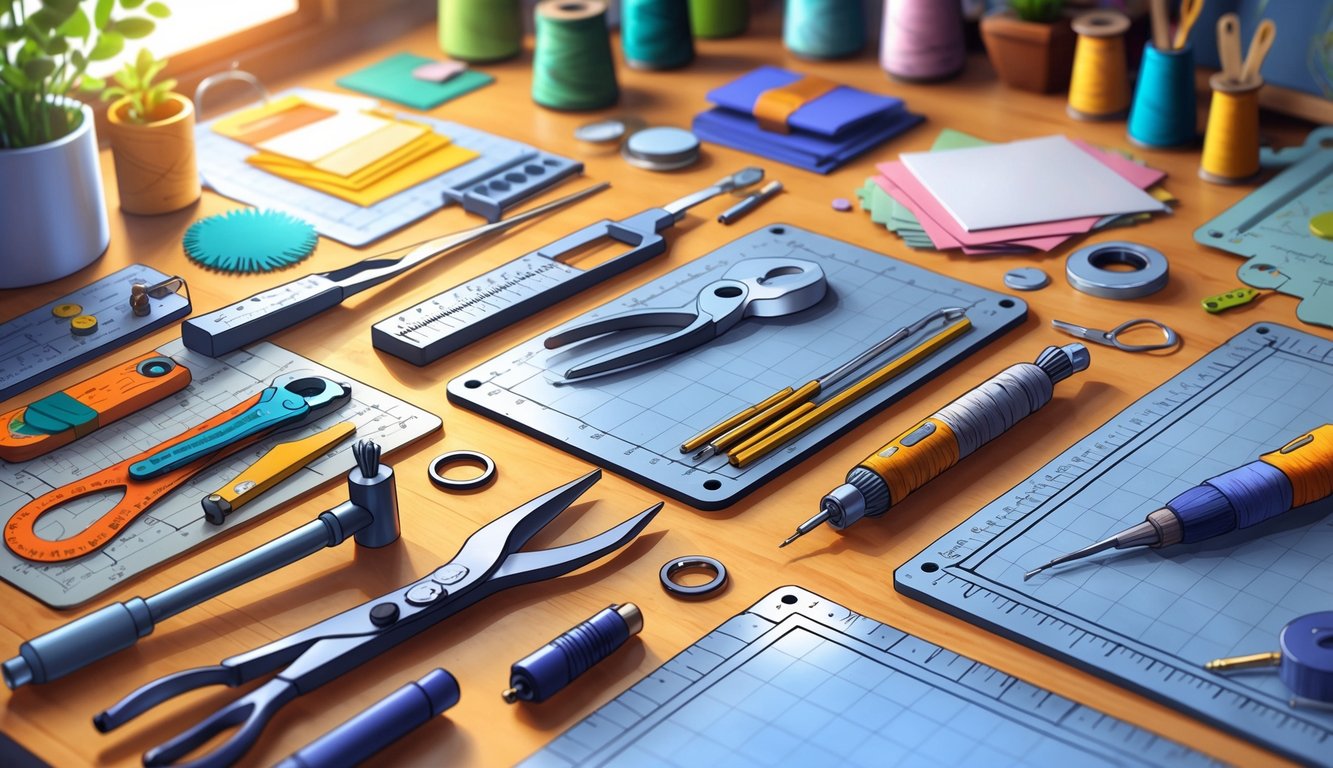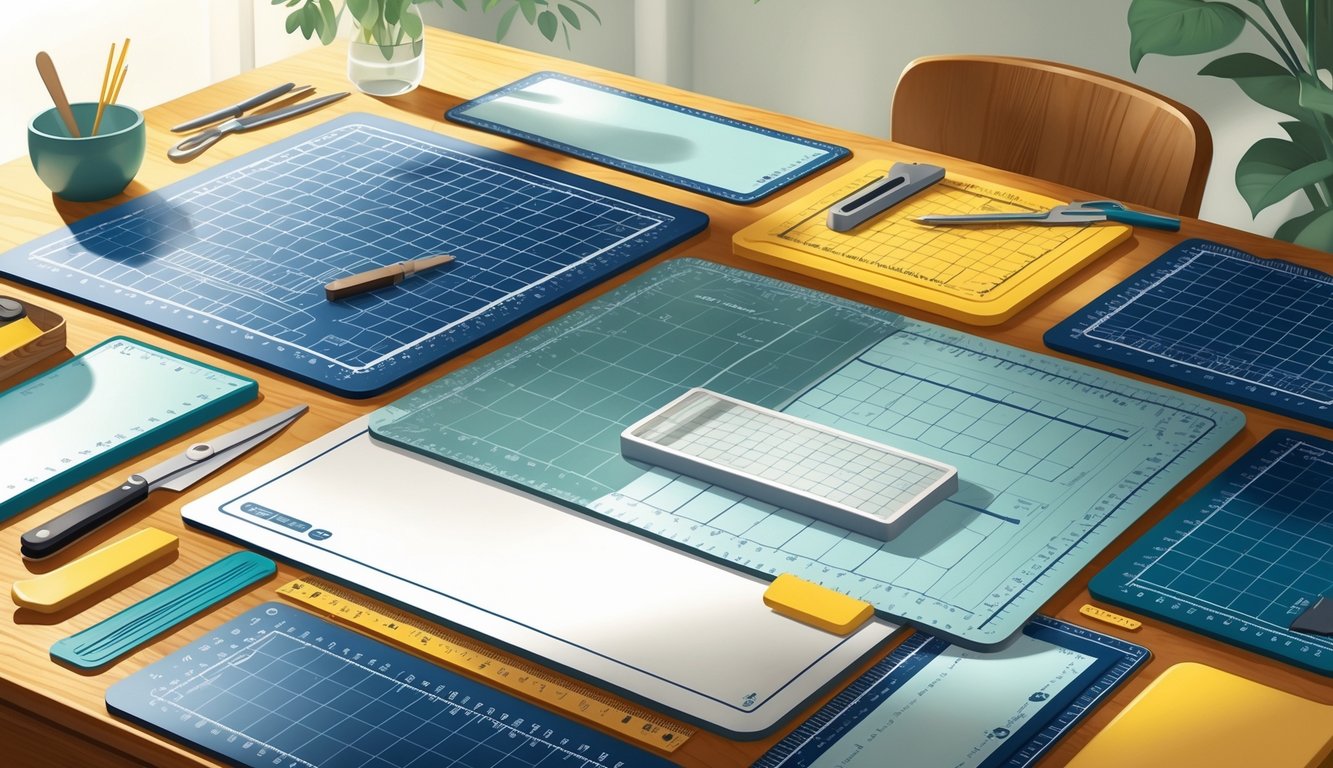
Cutting Tools Beyond Scissors
This week, three people in my studio grabbed the dullest scissors and shredded felt into something unrecognizable. Classic. Why does nobody sharpen scissors? Precision and speed just aren’t happening with junky student pairs from five years ago.
Craft Knives and X-Acto Blades
Trying to cut curves without a craft knife? Disaster. I end up with ripped corners, shaky lines, and a lot of swearing. X-Acto knives let me do the tiny stuff—kirigami, detailed cards—without bracing my whole arm. There’s a reason those things have hundreds of five-star reviews.
Some people use kitchen knives for chipboard, but those just mash the edges. I swap my No. 11 blade as soon as it dulls. A friend swears by #24 for bookbinding, but I keep losing those. Why do they always disappear?
On forums like The Spruce Crafts, pros basically yell about safety—finger guards, self-healing mats, backup blades. I still zone out and almost lose a thumbnail. Not proud, but it happens. Still, I’d pick a craft knife over scissors for stencils every time—even FaveCrafts says so.
The Versatility of Paper Trimmers
Nothing annoys me more than thinking a ruler and rotary cutter will work, and then the edge comes out jagged. Especially with cardstock. Why is every guillotine cutter missing the blade guard? I saw a teacher duct-tape it once—probably not OSHA-approved. And don’t get me started on people using pizza cutters on paper. Just… don’t.
Modern paper trimmers with titanium blades? They’re fast. I cut 50 invites in six minutes flat. Scissors would have taken all day. My trick: tape a stopper for perfect sizing, but I always forget the locking arm and nearly slice my knuckles.
Met a scrapbooker who swears by rotary trimmers for photos—says you need straight edges to win competitions. Adjustable grids help, but anyone measuring by eye is just asking for trouble. Dailymom has a list of specialized supplies that outperform the basics, but trimmers are the secret weapon nobody brags about.
When and Why to Use Decorative Scissors
Decorative scissors—those zigzag ones in every starter kit—are weirdly divisive. Total gimmick or secret weapon, depending who you ask. I tried them on glitter cardstock once. Big mistake. Metallic confetti everywhere.
Cheap pairs jam halfway through a cut. I’ve broken at least four. Good sets? They’re great for bookmark corners or fancy invitations. Someone I know collects them just for “emergency boredom,” which feels like missing the point.
One warning: never use decorative scissors on fabric. Blades dull instantly. Real crafters use them for accents, not every cut. I still panic and grab them when I’m behind on a deadline, even though they’re nowhere near as versatile as a craft knife or trimmer.
Precision and Protection: Mats and Surfaces

Watching someone cut directly on their kitchen counter makes me twitch. Ruined Formica, warped boards, disaster. Using a real craft mat—especially a self-healing one—changed everything for me. Less mess, fewer regrets, and I finally get why seasoned crafters won’t stop talking about their favorites.
Self-Healing Mats Explained
Okay, “self-healing” mats—let’s just get this out of the way: they’re not magic, and honestly, I’m tired of hearing people act like they’re some mystical thing. It’s just layers of plastic, usually PVC, squished together so when you cut them, the slice doesn’t stick around forever. I mean, I went at a 5-layer Headley Tools Self Healing Sewing Cutting Mat with a rotary cutter last year—five months later, you could barely see the grooves except where I dropped a boxcutter like a complete klutz.
Look, nothing lasts forever. These mats buy you time, though, way more than those old hard plastic ones that end up looking like a battlefield. If you know any quilter or collage artist, just ask them—nobody misses sanding out gouges every few months. And apparently, using self-healing mats helps rotary blades stay sharper longer? I didn’t believe it either, but I actually found some tool nerds with microscope photos to prove it. Guess it’s true.
Choosing the Right Cutting Mat for Your Craft
Why do people just grab the cheapest mat and call it a day? It’s wild. Thickness, grid lines, non-slip stuff, even the mat size—all of it changes how your project turns out. Karen Rynne (textile artist, and yes, she’s told me this twice) says a squishy mat just ruins precision. I checked out the Anezus Self Healing Sewing Mat reviews—yeah, people hate the soft ones for detail work.
Me? I need a mat with clear, honest grids and something that doesn’t glare like a car windshield under my lamp. If you’re into paper or leather, sometimes the vintage-looking ones are better for lining things up than for self-healing. And until someone invents a mat that finds my lost utility knife, I’ll just keep buying the ones that don’t warp or curl up like a potato chip after a sunny afternoon. It’s the boring stuff—like how flat it stays—that actually matters, not the color or whatever brand is trending.



